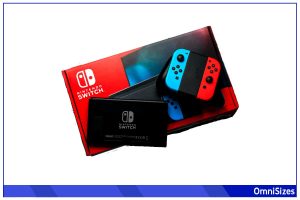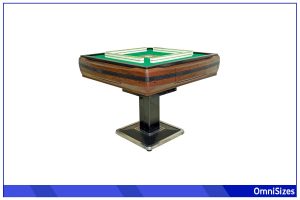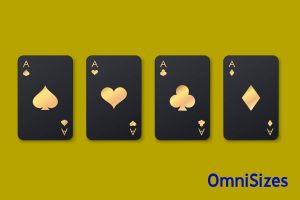Like the game, there are people out there who want to catch all of the Pokémon cards. But due to its popularity, counterfeit Pokémon cards aren’t hard to come by. Luckily, there’s one way to distinguish an authentic card from bogus ones: Pokémon card sizes.
Pokémon cards measure 2.5 × 3.5 inches (6.35 × 8.89 cm), with a thickness between 0.01 and 0.03 inches (0.03 and 0.07 cm). Oversized variants were released. Box toppers measured 3.54 × 5 inches (9 × 12.7 cm). Jumbo cards measured 6 × 8 inches (15.24 × 20.32 cm) before 2020 and 5.75 × 7.5 inches (13.97 × 19.05 cm) after.
However, being off-sized isn’t the only tell-tale sign of a fake. Before that, this guide will dive deeper into standard Pokémon card sizes. It will also describe how you can protect these precious collectibles from damage.
Pokémon Card Dimensions
If you’re a part of the Pokémon card collecting community or thinking of joining, one of the first things you should know is their size. Luckily, their sizes aren’t unsimilar to those of other popular card games.
Standard Pokémon Card Sizes
The standard Pokémon card size, which has remained the same since their creation in 1996, is 2.5 inches wide and 3.5 inches tall (6.35 × 8.89 cm). Unlike baseball cards, Pokémon cards have rounded corners, so these dimensions refer to the distances between imaginary corners.
Pokémon cards are made of pieces of cardboard glued together, with a thin black sheet sandwiched between them. They are made with 280-GSM cardstock, measuring 35 points. Each point is 1/1,000th of an inch thick, giving Pokémon cards a thickness of around 0.035 inches (0.09 cm).
Pokémon Card Size Variants
Special Pokémon cards broke out the mold and didn’t adhere to standard sizes. However, these were incredibly rare and can be worth quite a lot today.
- Box Toppers: These were bonus cards awarded to collectors who purchased specific booster box sets. From 2002 to 2004, these cards measured 3.54 × 5 inches (9 × 12.7 cm) with almost 3 times the surface area of a standard Pokémon card. Between 2004 and 2006, when it was discontinued, box toppers shrank to standard card sizes but retained their unique designs and rarity symbol (★H).
- Jumbo Oversized: While box toppers were large, they weren’t the largest variant to be released. Jumbo oversized cards came in two size variants, depending on the year: 6 × 8 inches (15.24 × 20.32 cm) before 2020 and 5.5 × 7.5 inches (13.97 × 19.05 cm) after 2020. These cards, however, are promotional items and cannot be used in official tournaments.
- Bandai Carddass: Now headed in the opposite direction of the size spectrum, we have Bandai Carddass cards, which measured 2.21 × 3.37 inches (5.61 × 8.56 cm). These cards were sold in vending machines only in Japan between 1996 and 1997. Not only are they smaller than standard Pokémon cards, but their designs were completely different. For starters, the Pokémon’s stats were written on the back of the card, rather than the bottom portion of the card’s front.
Spotting a Fake Pokémon Card
Due to the popularity of Pokémon cards, the world has unfortunately seen an influx of fake cards flood the market. Unfortunately, counterfeiters aren’t too worried about selling these fakes for inflated prices, so you should be extra-careful when purchasing high-value cards. Here are a few ways to spot a fake in the wild:
1. Check the Card’s Size
One of the first tell-tale signs that you’re dealing with a fake card is its size. Many counterfeiters don’t have the same method of sizing each card to precise measurements, so the cards may end up a fraction of an inch off. If the size feels wrong, trust your gut—the card is probably fake.
2. Read the Card’s Details
Are there misspelled words or Pokémon names on the card? If so, it’s not worth your time. A clear indication of a fake is a missing accent mark over the ‘e’ in ‘Pokémon,’ but any typo is a red flag.
To make matters even more confusing, there are such things as misprints, which are official Pokémon cards with typos made by the manufacturer. These can be worth a pretty penny.
3. Wrong Back Side
Even though the face of the Pokémon card is where the action is, its back can tell you quite a lot. For instance, if the image of the Pokéball on the back of the card is off-center, it’s most likely a fake. Also, pay close attention to the blue border—it should maintain a consistent width along the perimeter of the card. If the width is inconsistent, or if the border’s color bleeds in with the card, don’t waste your time with it.
How to Protect Your Pokémon Cards

Serious and even casual collectors will want to keep their Pokémon cards in tiptop shape, especially since their value can skyrocket at any moment. The good news is that keeping your cards safe and intact is a lot easier than it may sound at first.
1. Hold Your Card by the Edges
When unpacking your cards, do not grab the face or back. The oils from your fingertips can leave smudges, which may ruin the overall look and feel of the card. The best way to handle your cards is to grab them by their edges, making sure not to smoosh them together and risk bending the card.
2. Sleeve Your Cards
A sleeve is a plastic protector that keeps your card away from air, moisture, and light exposure. As soon as you unpack your cards, choose the ones you want to protect and place them in a sleeve.
There are all sorts of sleeves to choose from, like penny sleeves, soft card sleeves, and top loaders. Make sure the sleeves are designed for Pokémon cards! For the 99% of your cards that aren’t worth protecting, they can go in a shoebox.
3. Keep Your Sleeved Cards in a Cool, Dark Area
When you’re not pitting your best cards against another trainer’s Pokémon, you need to keep your cards away from harm. You can do this by placing your sleeved cards in an acrylic case, where your cards can stand upright or lie down. Now, place your collection in a cool, dark area, such as a closet or a cabinet.






